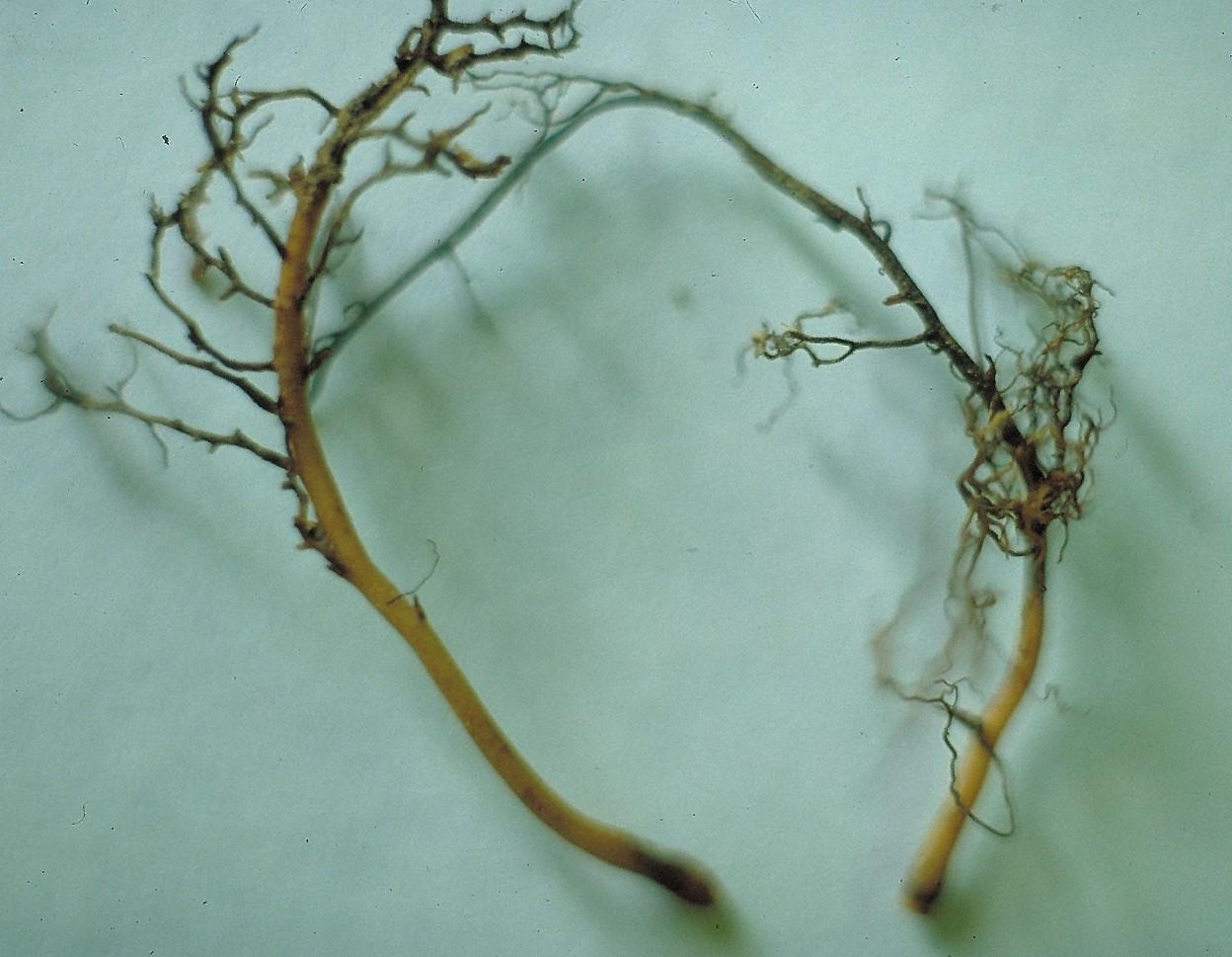Black Root Rot Complex of Strawberry
Return to Diseases
Black root rot complex (Rhizoctonia and/or Pythium spp.) refers to decline of plantings over time. The complex is often a combination of soil-borne pathogens and abiotic stresses (e.g. excess water, drought, or cold injury). As plantings decline, individual plants become stunted, lose vigor, and lose many older leaves. Plants produce smaller and fewer fruit. Symptoms are usually most severe right before harvest. Pythium spp. favor cool, wet conditions and infect young feeder roots beginning from root tips. Rhizoctonia spp. infect both feeder roots and structural roots, with scattered infections along roots. Both pathogens overwinter in soil. Lesion nematodes have been associated with black root rot in other states, but this has not been reported in Kentucky. Often, infections by pathogens are secondary to environmental (abiotic) stresses.
Black root rot (right) compared to healthy roots (left).
(Photo: Frank Louws, North Carolina State University)
Blackened root lesions.
(Photo: John Hartman, University of Kentucky)
Management:
- Provide good drainage and avoid heavy soils.
- Rotate with non-host crops; rotate away from strawberry for 3 to 5 years.
- Mulch to prevent winter injury.
- Irrigate during drought.
- Eliminate other sources for plant stress.


